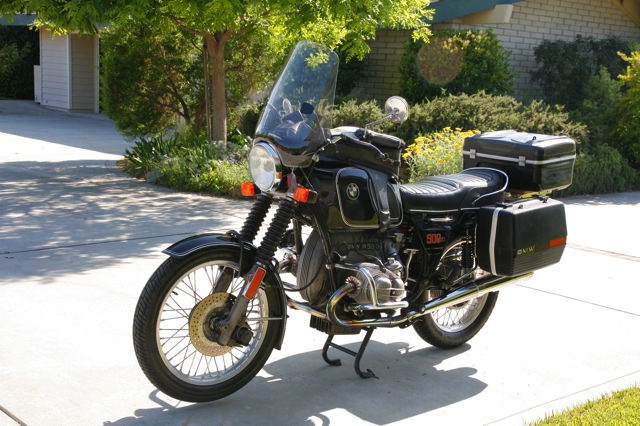4 years on.
Steve died four years ago today and we will soon be enjoying the Aaron Sorkin biopic. starring the splendid Michael Fassbender, who happens to be a devoted biker himself. In fact, he does not even own a car.
Some six years ago I wrote of the visceral appeal of old motorcycles and my BMW R90/6, a 1975 model, remains in service today and I still enjoy the heck out of riding it. These older BMWs, air cooled with the horizontally opposed cylinders poking either side into the airstream are, appropriately enough, referred to as ‘Airheads’. BMW continues to stock almost every part for machines made since 1972, which is remarkable, as are the prices!
Few know that Steve was a BMW bike rider before migrating to Mercedes cars later on:
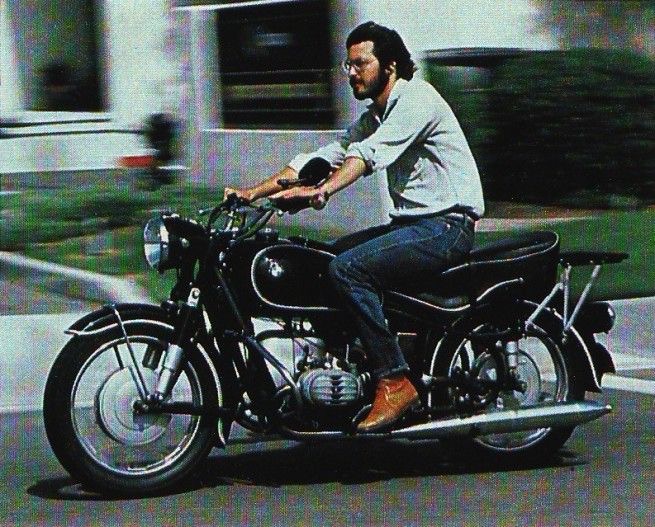
He’s riding a late ’60s R60/2 with the lovely Earles front forks named after the British inventor, Earnie Earles. The design, way ahead of its time, ensured that there was no dive under heavy braking while also providing the solidity needed for hauling a sidecar, a not uncommon form of transportation in a still poor, war torn Europe back then.
My R90/6 had been in storage for four years while I enjoyed a 1989 R100RT touring machine; that has now moved to a good home and I am returning to my first love. I have owned the R90/6, for over 25 years. I am the second, and likely last, owner.
Totally devoid of electronics, my beast nonetheless refused to start owing to an electrical problem. Electricity, as we all know, is the work of the devil. After locating the correct wiring diagram (there are several for 1975 – don’t ask) I printed it on no fewer than eight sheets of paper using Split Print so I could actually trace the wiring. Finally diagnosis pointed to a blown diode in the headlamp shell, a veritable linguine of wiring, and after replacement the God of Tesla spoke once more to the electrical systems.
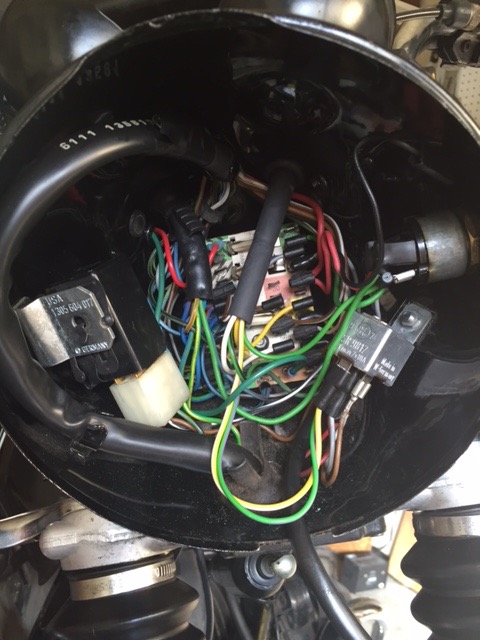
Linguine – or is that spaghetti – wiring inside the headshell.
As befits Real Men, the machine has a kick starter which you can see me use in the video taken by my son, in addition to a more modern electric one. Refresh the page if it does not come up. This is the first time the bike has run in four years. Note especially my ancient Airheads T shirt. You can hear the massive clunks from the gearbox as I shift – early airheads were always thus, and at 60,000 miles the ‘box is as good as new:
The pause at the end of the driveway is to turn off the choke using the relatively inaccessible lever on the airbox.
Laying up any machine for so long a period of time is never good. Drain all the fluids and your seals dry out, only to leak once the fluids are replaced. Don’t drain them and water vapor enters and starts to rust parts out. I had taken the precaution of draining everything and was rewarded with two leaky petcocks supplying gasoline to the carburetors.
Then the clutch cable was disclosed to be on its last legs, frayed beyond belief. You can’t win.
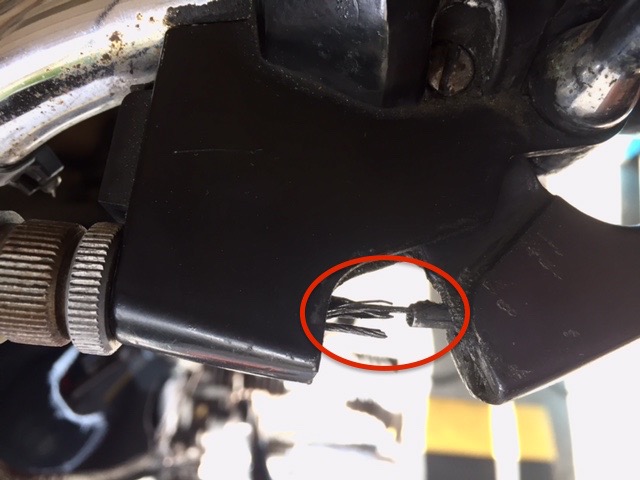
It’s always something with old machines.
The new cable in place. Aaah!
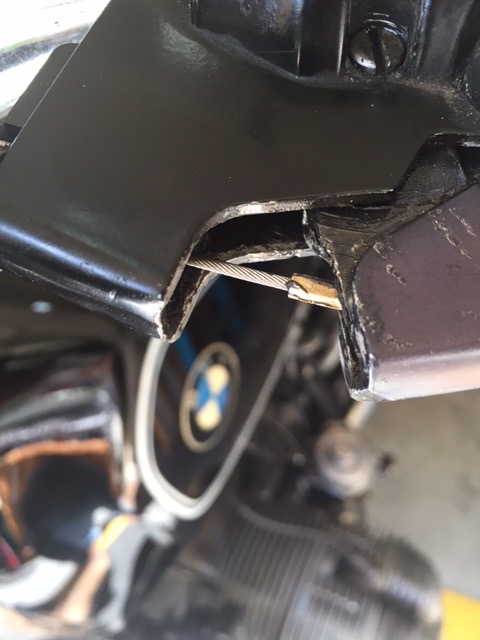
Setting the points gap on this 19th century device is never fun and was always the cause of much Garage Language, until I chanced upon an elegant tool designed and machined by Paul Tavenier (Amazon carries the tool. But of course):
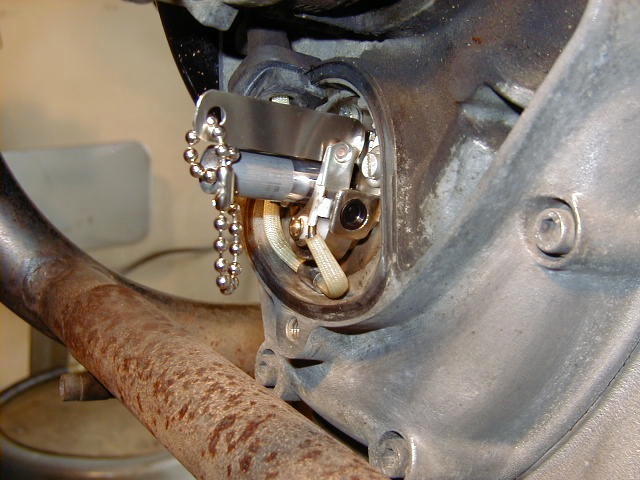
Paul’s supremely elegant points tool.
The tool is placed over the spigot once the advance mechanism is removed. There’s no need to set TDC – the tool emulates it, the collar separating the points to maximum opening. Push it on, adjust the points gap until the included 0.40mm feeler gauge is a sliding fit, and you are done. Bliss.
Airheads came with exceptionally complete tool kits and were sadly discontinued in 1995 in favor of modern marvels which need a PhD and a computer to fix. That and lots of money.
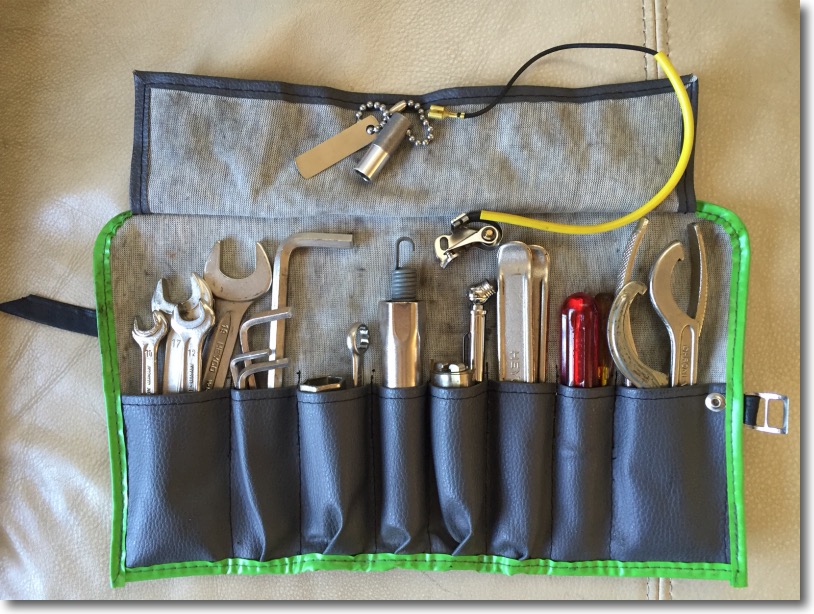
The Airhead toolkit, supplemented by Paul’s tool and spare points. The spare coiled spring in the center is one of two keeping the center stand up when raised.
There are few tasks you cannot complete with the above, aided in no small part by the exceptionally elegant and modular design of the machine.
Now one thing led to another and as is the wont of Airheads we chatted a bit about our machines. Paul happens to have been riding his R90/6 for 35 years now, making me a relative novice. Well, wouldn’t you know it, he is the same Paul Tavenier who was on the original Macintosh design team! Paul writes that Steve’s earlier R75/5 sat in the inner lobby of the Bandley 3 building at Apple for many years, on display as an example of what great design is all about.
Thank you, Paul. Airheads Rule. And Steve, you are much missed.
Photographic tributes? You will not find a finer one than mine.
